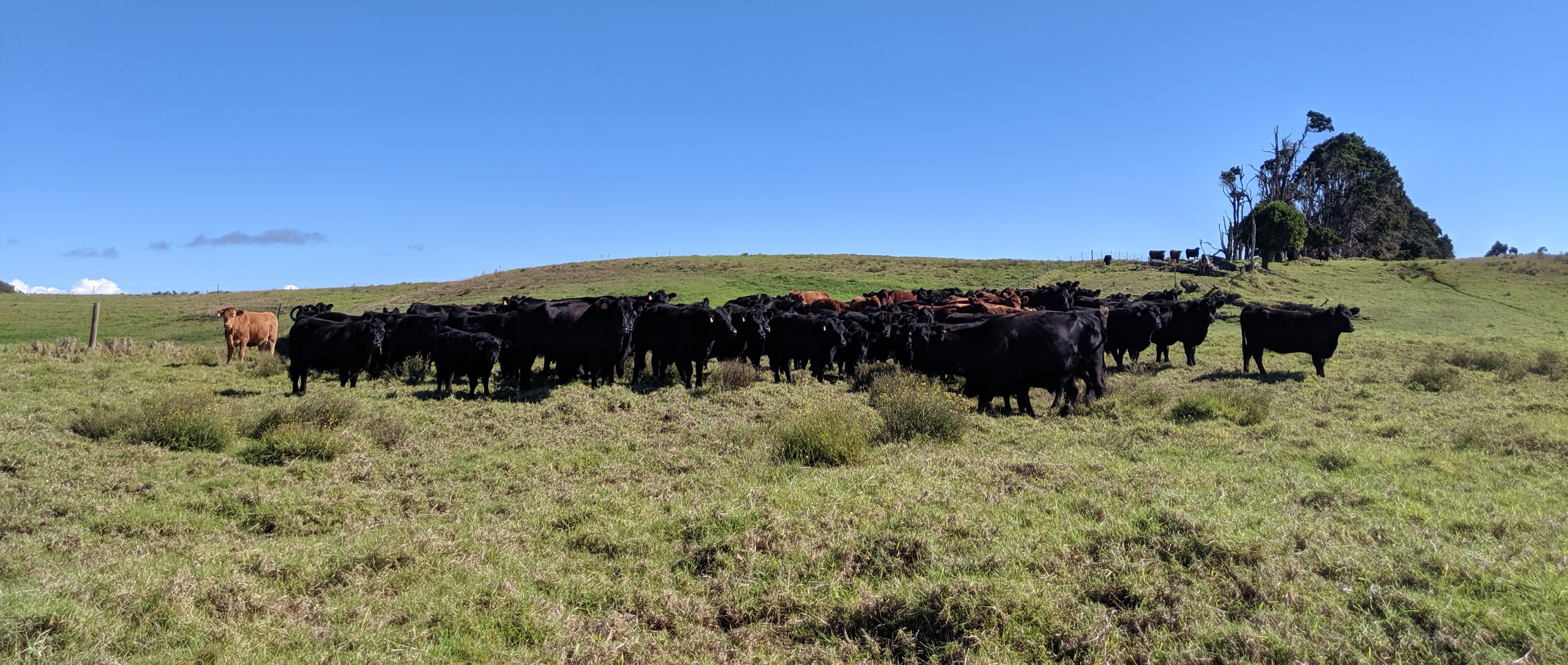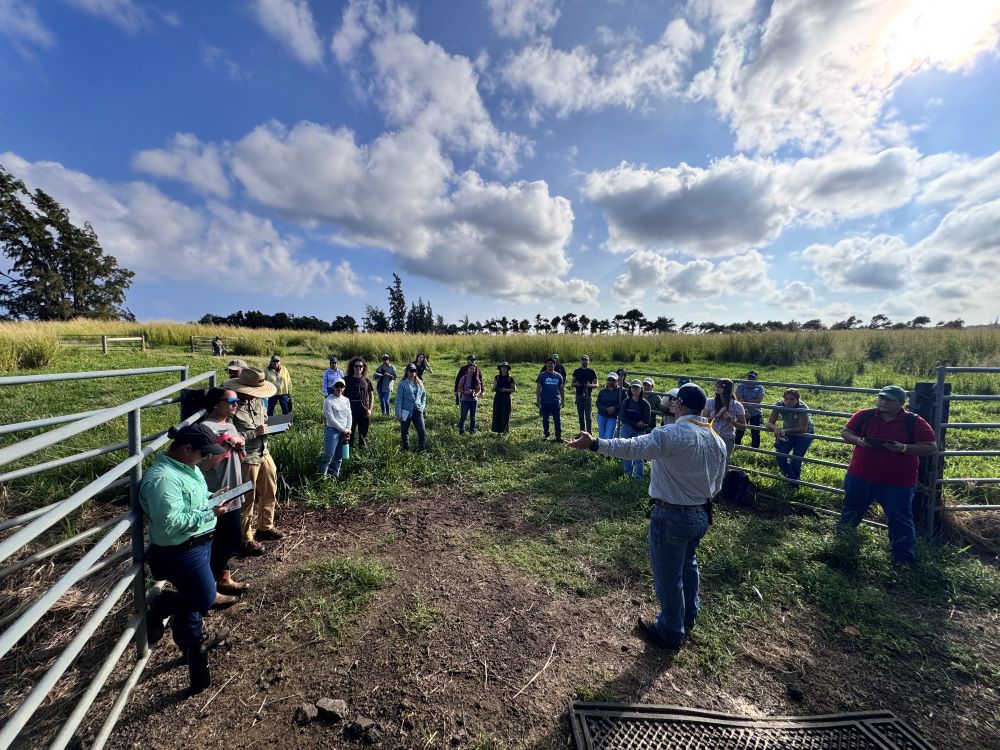
WELP: WORKING EFFECTIVELY WITH LIVESTOCK PRODUCERS
Bridging the gap between NRCS and ranchers in Hawaiʻi
by McKenzie Wildey, 2/19/2025
Strengthening Partnerships and Communication: Recap of the WELP Workshop in Hawaiʻi
In early January, the National Grazing Lands Coalition (NatGLC) together with the Hawaii Grazing Lands Coalition (HGLC) had the privilege of hosting the Working Effectively with Livestock Producers (WELP) workshop, a multi-day training event aimed at empowering NRCS employees and their partners to engage more effectively with livestock producers. The WELP workshop’s core mission is simple yet powerful: to improve the way NRCS staff interact with livestock producers, particularly in the context of applied resource conservation on grazing lands. By expanding their understanding of livestock operations, the economic impact of conservation decisions, and the specific needs of ranching enterprises, NRCS staff will be better prepared to provide targeted support for these crucial agricultural operations. The Hawaiʻi WELP workshop was tailored to address Hawaiʻi’s unique ranching environment, history, and culture.

NatGLC + HGLC Collab!
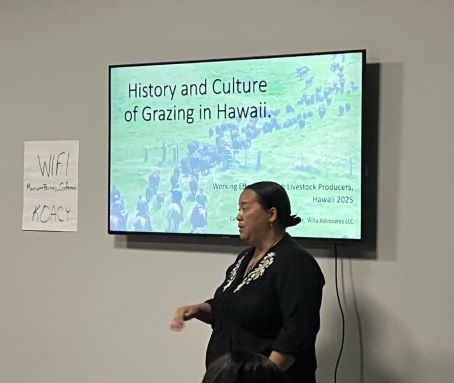
Tailored Talks
History and Culture of Grazing in Hawaiʻi, by Carolyn Auweloa (HGLC).
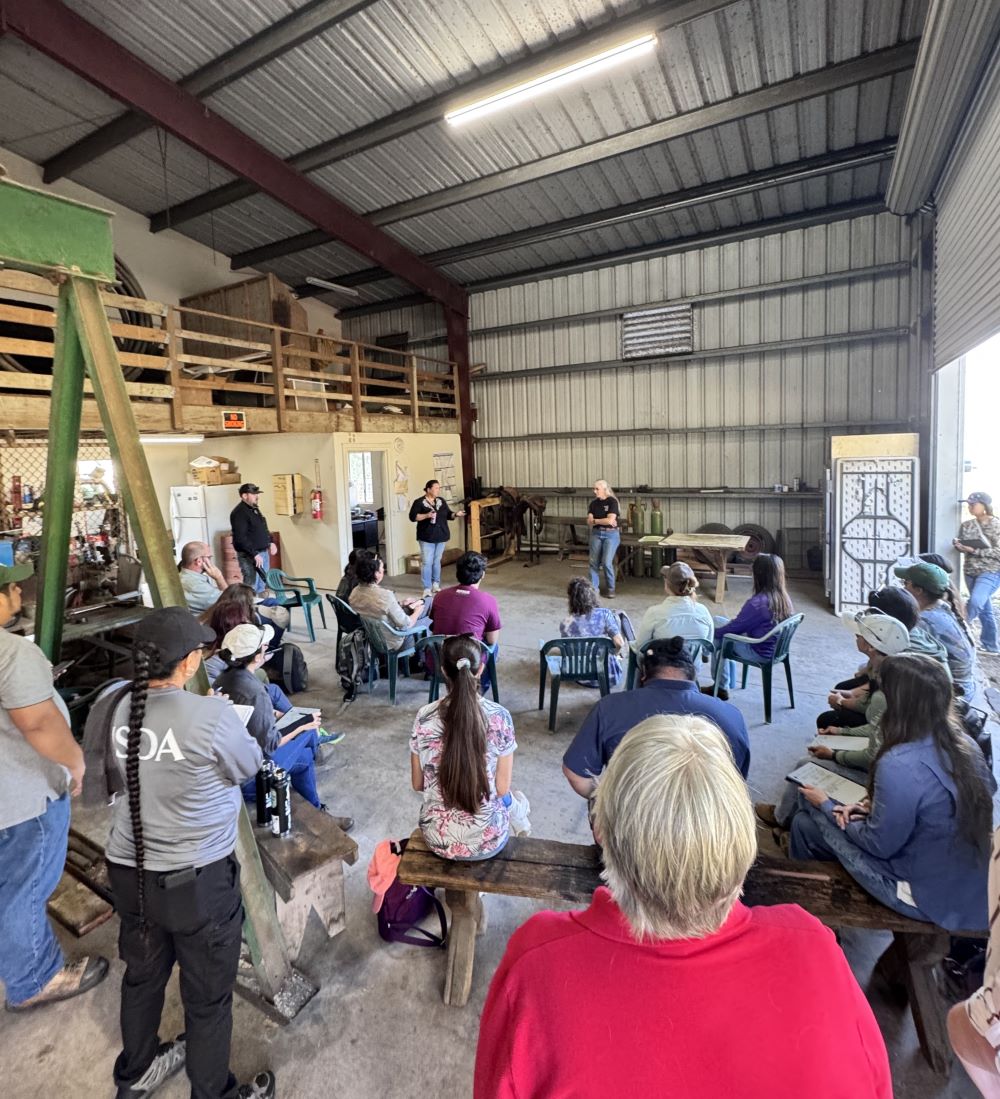
WELP students on site at a ranch in South Kona.
Photo credit: Dylen Joaquin
A Collaborative Effort for Lasting Impact
The WELP workshop is offered nationwide and with funding from the National Grazing Lands Coalition (NatGLC), it has become an important resource for those working in conservation and agriculture. In mid-2024, NatGLC reached out to the Hawaii Grazing Lands Coalition to help deliver the workshop in order to leverage HGLC’s local knowledge and connections. The event brought together a diverse group of professionals, including NatGLC staff Kim Stine, Tom Shea, and Abigail Levin, alongside NRCS representatives Jill Beaton and Anna Ferguson, with guest speakers Senator Tim Richards of Hawaii and Travis Jones from the Noble Research Institute. Together, we were able to offer a comprehensive program that combined classroom learning with on-the-ground experiences.
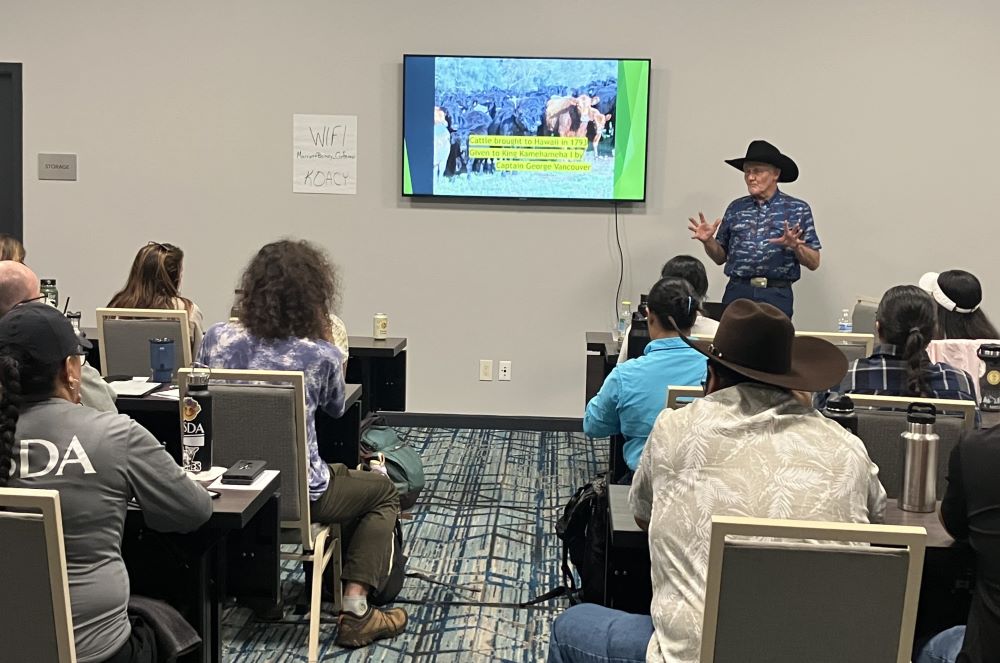
Senator Tim Richards speaks to WELP students.
Photo credit: Nicole Galase
Building Better Communication & Understanding
Held at the King Kamehameha Courtyard Marriott in Kailua-Kona, the workshop offered a diverse mix of classroom sessions and field visits. The first day focused on effective communication, an essential skill for NRCS staff working with diverse stakeholders in the agricultural community. HGLC facilitated a social gathering that evening, which provided an informal setting for attendees to engage with each other and share insights and challenges. On Day 2, the group delved into more technical aspects of Hawaii’s unique livestock industry. Presentations covered the specific challenges and strategies of grazing management, and participants visited Kealia Ranch in South Kona, guided by Sara Moore. Sara’s experience as a rancher and conservation advocate provided valuable, real-world insights into how NRCS staff can better support ranching operations through effective resource conservation practices. The third and final day included a visit to Lewis Cattle Co. in Kohala, led by Scotty Lewis, another dedicated local rancher who was eager to share his experiences with the next generation of NRCS workers. The day wrapped up with classroom sessions on grazing and conservation strategies, reinforcing the key messages of the workshop and leaving participants with a stronger understanding of the livestock sector.

On-Site Visits
From left to right, Tom Shea (NatGLC), Dylen Andrade-Joaquin (AJ Ranch & HGLC), Sara Moore (Kealia Ranch), and Carolyn Auweloa (HGCL) shared their experiences with WELP students.
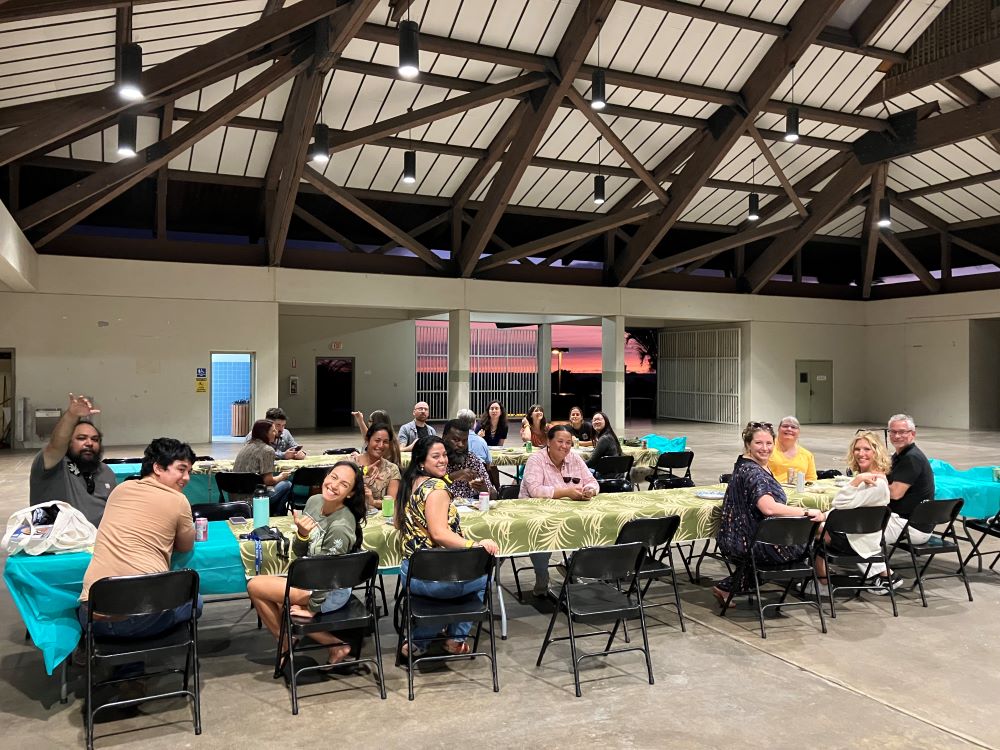
Pau Hana Social Event
WELP staff and students enjoyed an evening of delicious food, games, and karaoke. The social was a great opportunity to build relationships across the industry.
A Great Opportunity for Learning
The workshop attracted a diverse group of participants, with a notable presence of younger NRCS staff members eager to deepen their understanding of the livestock industry. One key area of interest was understanding the intricacies of the cow/calf operations that are prevalent in Hawai’iʻs cattle industry. For many attendees, this was an opportunity to ask critical questions, clarify misunderstandings, and gain insight into how these operations fit within the broader context of agricultural conservation. The WELP workshop proved to be an invaluable resource for attendees, not only expanding their knowledge of livestock production but also enhancing their communication skills, which are essential for fostering strong relationships with producers. The event highlighted the need for continued professional development and training in this area, particularly as new NRCS employees are onboarded and more young conservationists enter the field.

A Hands-On Experience
NRCS WELP students even got to try their hand at cattle roping!
Looking Ahead
As the workshop concluded, there was clear recognition that this kind of training is essential to the ongoing success of NRCS programs and the agricultural community. Given the enthusiastic participation and the questions posed by attendees, there is a growing demand for future workshops. The WELP workshop is expected to be held every 2-3 years to ensure that new employees and those who were unable to attend have access to this vital training. By fostering a deeper understanding of the livestock industry and promoting better communication between NRCS staff and producers, the WELP workshop is helping to strengthen the ties between conservation efforts and agriculture in Hawaii and beyond. As we move forward, this kind of collaboration will continue to be essential in promoting sustainable practices that benefit both the land and the communities that depend on it.
